Alexander Hughes Huntriss
The scale of the killing in the first World War is hard to comprehend. Over 16 million people lost their lives during that conflict - more than the combined population (in 2019) of London and Sydney. They were all individuals, each with a past, a story to tell, a family left to grieve.
Alexander Hughes Huntriss was one such individual. His story has connections that reach back to Northern Ireland in the late eighteen century, and connections that are echoed in the current generation of the Huntriss family in Australia.
Alexander Hughes Huntriss was born in New South Wales in Australia in 1891 to Frederick and Janet Huntriss; Frederick was born in Sherburn-in-Elmet in Yorkshire, but the family moved Workington. Frederick emigrated to Australia, and was married in New South Wales in 1886.
Frederick's mother was Mary McCleery Brown (my great-great grandmother); her father was Adam Hughes Brown, born in Portaferry in Northern Ireland in 1794, a ship owner and master mariner. It seems likely that this is the derivation of Alexander's middle name.
Photo taken by in 1964 by Brian Huntriss of a headstone in Workington cemetery. The headstone had been partly buried, which explains the discolouration, Sadly, the headstone has since been removed from the site.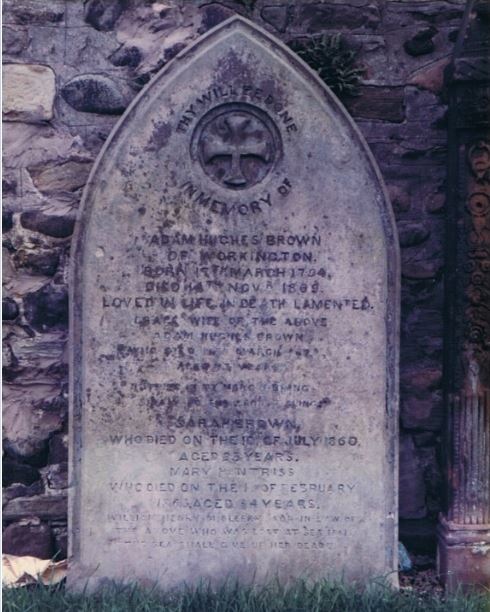
The inscription reads:
In memory of Adam Hughes Brown of Workington, Born 18 March 1794, died 14 November 1869. Loved in Life, in death lamented. Grace, wife of the above Adam Hughes Brown. …....... Sarah Brown, who died on the 10th of July aged 23 years. Mary Huntriss, who died on the 1st of February 1863 aged 34 years. William Henry McCleery, son in law of the above, who was lost at sea. "When the sea shall give up her dead"
In 1912, Alexander was a teacher.

In August 1915, Alexander enlisted in the Australian Imperial Force.
His younger brother Frederick enlisted with the 2nd Battalion 9th Reinforcements at Liverpool NSW in the same month.
At the start of the war, Australia's military forces were focused upon the part-time militia. The small number of regular personnel were mostly artillerymen or engineers and were generally assigned to the task of coastal defence. Because of the provisions of the Defence Act 1903, which precluded sending conscripts overseas, it was realised when the war broke out that a totally separate all volunteer force would need to be raised.
The Australian government pledged to supply 20,000 men organised as one infantry division and one light horse brigade plus supporting units, for service "wherever the British desired", in keeping with pre-war Imperial defence planning. Officially coming into being on 15 August 1914, the word 'imperial' was chosen to reflect the duty of Australians to both nation and empire.
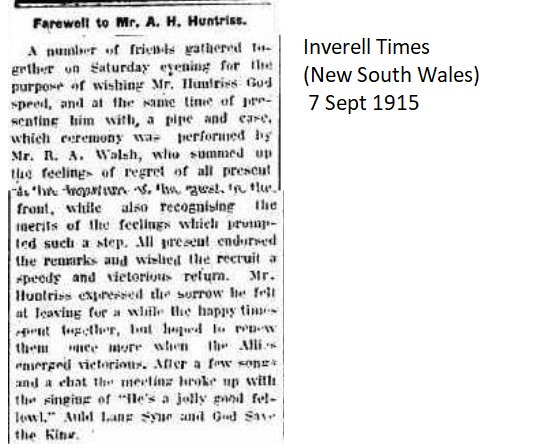
He joined the 30th Battalion, 6th Reinforcement and left Australia on the ship HMAT Nestor in April 1916.
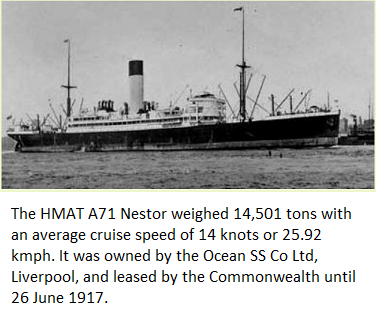
After arriving in Egypt he was sent to England in June and three months later went to France.
During the dreadful winter of 1916/17 Alexander became ill with pneumonia and was returned to England where he was admitted to hospital. Whilst recovering he helped teach French to other soldiers and nurses. After four months he returned to France.
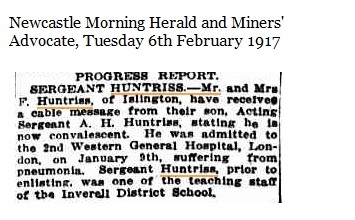
Whilst the report states that he was at the 2nd Western General Hospital in London, this is likely to be incorrect, as the 2nd Western was in fact located in Manchester. He was certainly at the Australian Auxiliary Hospital no 1 at Harefield Park.
In November 1914, Mr & Mrs Charles Billyard-Leake (Australians resident in the UK) offered the property known as "Harefield Park", Harefield, Middlesex, to be used as a home for convalescent wounded soldiers of the Australian Imperial Force. Their offer was accepted by the Commonwealth Defence Department in December 1914.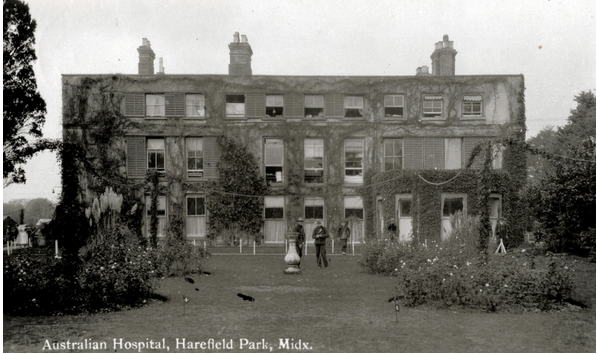
The property comprised Harefield Park House, a plain three-storey brick structure, some outbuildings and ample grounds. A the time of the offer it was estimated by the military authorities that the house would accommodate 50 soldiers under winter conditions and 150 during spring and summer. In fact, the hospital accommodated over 1000 beds at the height of its use and also a large number of nursing and ancillary staff.
Harefield later became a sanatorium, and was the foundation for one of the world's leading hospitals
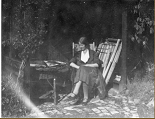 Theodora Roscoe was born into a wealthy middle-class family in Chalfont St. Peter. The family had originated in Liverpool; her great-great grandfather, William Roscoe, was a noted historian, botanist and an opponent of the slave trade. Theodora along with other ladies in the neighbourhood became volunteers at Harefield. Duties included talking to the wounded soldiers, writing letters for them to their families and, in Theodora’s case, giving lessons in French.
Theodora Roscoe was born into a wealthy middle-class family in Chalfont St. Peter. The family had originated in Liverpool; her great-great grandfather, William Roscoe, was a noted historian, botanist and an opponent of the slave trade. Theodora along with other ladies in the neighbourhood became volunteers at Harefield. Duties included talking to the wounded soldiers, writing letters for them to their families and, in Theodora’s case, giving lessons in French.
One of those soldiers was Alexander Huntriss, who, following his stay at Harefield, sent Theodora a copy of an essay by Ralph Waldo Emerson entitled "Friendship".
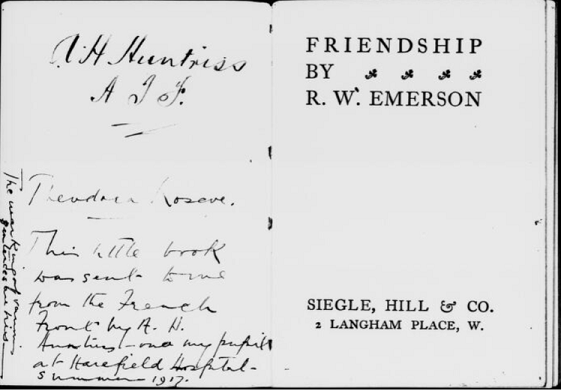
On the cover, Theodora makes the following comment:
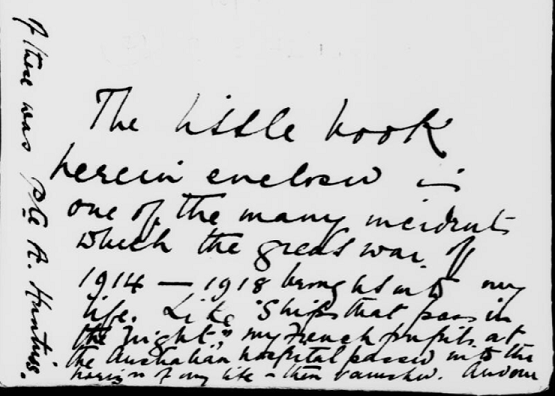
"The little book herein enclosed is one of the many incidents which the great war of 1914-1918 brought into my life. Like ships that pass into the night, my French pupils at the Australian hospital passed in to the horizon of my life and then vanished. And one of these was Pte A Huntriss"
Within a few months, Alexander was dead.
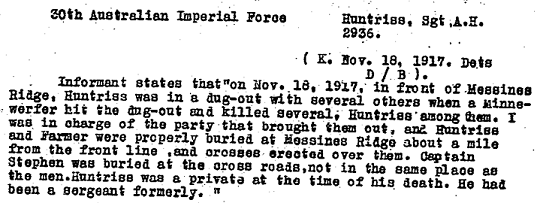
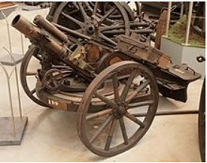
Minenwerfer (Mine launcher) is the German name for a class of short range mortars used extensively during the First World War by the German army. The weapons were intended to be used by engineers to clear obstacles including bunkers and barbed wire that longer range artillery would not be able to accurately target.
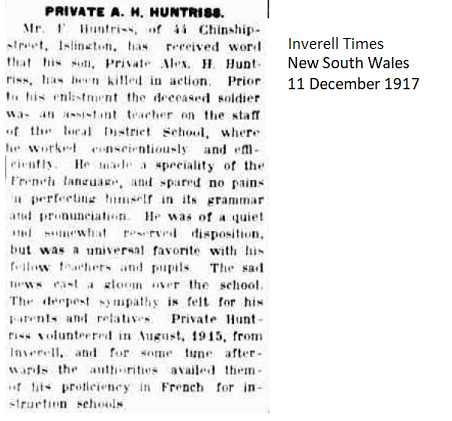
Alexander was buried at Bethlehem Farm West Cemetery, Messines, Belgium.

At Inverell Alexander’s name is recorded on the Inverell District School’s Roll of Honour, the Inverell Honour Roll and the Cenotaph. In 1919 he was one of the men for whom a memorial tree was planted in Kurrajong Parade, Inverell. Alexander’s name is also on the Newcastle High School WW1 Honour Roll.
His brother Frederick served in Egypt and France, and had returned home in September 1917 having been medically discharged.
In 1881, census records show that some of Frederick's younger sisters were being looked after by their aunt Grace (Mary's sister), and her husband James Finlay. The naming of Alexander's younger brother as James Finlay Huntriss is yet another example of the influence of the family on the naming of children. Alexander's sister was Leah Alexandria; it seems reasonable to assume that this is also a family reference, although I am yet to make a specific connection.
The tradition continued in James Finlay Huntriss's family; his first son (born in 1911) was Alexander William Huntriss, who in turn included the name in that of his youngest son, Dennis Alexander Huntriss (who died shortly after birth). Sadly, Alexander William Huntriss was himself killed in a tragic car accident in 1954, leaving his wife to look after five children, then aged between 5 and 16.
The name has continued into the present; Alexander William Huntriss' grandson Paul and great-grandson Damian both have Alexander as their middle name.
Alexander Hughes Huntriss gave his tomorrow for our today. We will remember him.


